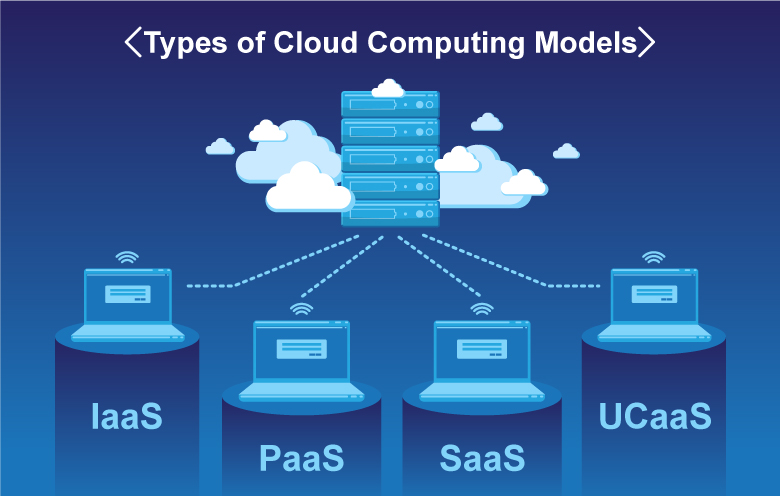LinkDaddy Cloud Services: Cutting-Edge Solutions for Your Business Requirements
Achieve Seamless Scalability With Cloud Services
In the ever-evolving landscape of cloud solutions, achieving seamless scalability stands as a cornerstone for modern organizations seeking to stay adaptable and competitive. The quest for smooth scalability with cloud services introduces a world of opportunities for those ready to welcome the transformative power of vibrant resource monitoring.
Benefits of Cloud Scalability
Cloud scalability offers companies the flexibility to dynamically change sources based upon demand, making certain optimal performance and cost performance. One vital benefit is the capacity to scale resources up or down rapidly in action to varying work. This dexterity enables companies to fulfill altering customer requirements without over-provisioning sources, eventually leading to cost savings. Scalability also improves efficiency by guaranteeing that systems can manage boosted traffic or workload without experiencing downtime or stagnations. By efficiently assigning sources, companies can keep high levels of performance throughout peak times without unneeded costs during quieter durations. Furthermore, cloud scalability advertises technology and trial and error by enabling organizations to conveniently examine originalities and scale them as required. This flexibility urges a society of continual renovation and adaptation, allowing companies to remain competitive in a quickly advancing market landscape. Ultimately, the benefits of cloud scalability prolong beyond expense savings to encompass improved efficiency, agility, and advancement.
Trick Functions for Scaling
Efficient scaling in cloud services depends on essential attributes that allow organizations to adjust resources dynamically based on need. One crucial attribute for scaling is elasticity, enabling sources to scale up or down in response to rising and fall workloads. This makes sure that organizations can meet efficiency requirements without over-provisioning resources. An additional crucial feature is scalability, making it possible for systems to deal with raised work by adding resources flawlessly. This feature is essential for suiting growth without endangering efficiency. Additionally, automation plays an essential role in scaling by automating the provisioning and de-provisioning of sources based on predefined plans. Automation minimizes human treatment, boosts performance, and guarantees quick action to changing demands. Tracking and analytics tools are additionally necessary for scaling, providing insights into resource use, efficiency metrics, and possible traffic jams. These tools allow organizations to enhance and make informed decisions source appropriation for effective scaling. On the whole, these essential attributes collectively equip companies to accomplish seamless scalability in cloud services.
Carrying Out Auto-Scaling Approaches
To properly enhance resource allowance and adjust to varying work, companies have to purposefully carry out auto-scaling methods in their cloud services infrastructure. Auto-scaling allows systems to instantly change the number of compute resources based upon real-time demand. There are numerous auto-scaling strategies that organizations can utilize, such as predictive scaling, which makes use of historical information to forecast future source requirements, and reactive scaling, which reacts to existing workload changes.

Finest Practices for Scalability
For organizations intending to improve their scalability in cloud services, executing finest techniques is crucial for optimal efficiency and resource management. One key ideal method is developing applications with a microservices style. This technique breaks down applications into smaller, independent check that solutions that can be deployed, upgraded, and scaled independently, enabling greater flexibility and scalability.
An additional crucial practice is making use of containerization modern technology, such as Docker or Kubernetes. Containers allow the product packaging of applications and their dependences into separated units, making it less complicated to scale parts independently and release them consistently throughout various atmospheres.
In addition, executing automated release and infrastructure as code (IaC) can improve scalability efforts (linkdaddy cloud services). Automation tools like Terraform or Ansible help in provisioning and managing resources effectively, decreasing manual mistakes and enabling fast scalability
Moreover, keeping an eye on performance metrics, establishing alerts, and carrying out normal ability planning are necessary practices to guarantee proactive scalability monitoring. By sticking to these best techniques, companies can accomplish smooth scalability in their cloud solutions while why not look here optimizing performance and source utilization.
Monitoring Performance Metrics
When evaluating the efficiency of cloud services scalability, carefully keeping track of performance metrics is important for making sure ideal functionality and resource allotment. By continuously tracking key efficiency indications (KPIs) such as action times, throughput, resource, and latency application, companies can acquire beneficial insights right into the health and wellness and efficiency of their cloud infrastructure. Monitoring efficiency metrics enables for the very early discovery of prospective bottlenecks or issues that can influence scalability, making it possible for aggressive steps to be taken to address them before they rise.

Verdict
To conclude, achieving seamless scalability with cloud solutions is essential for companies to maximize performance, enhance innovation, and maintain high performance degrees during peak times. By leveraging the benefits of cloud scalability, carrying out auto-scaling strategies, making use of crucial functions such as flexibility and automation, and following ideal practices like application layout and efficiency monitoring, businesses can effectively scale their systems while taking full advantage of resource usage and performance.
The pursuit for seamless scalability with cloud solutions unveils a globe of possibilities for those willing to embrace the transformative power of dynamic resource monitoring.
Cloud scalability supplies organizations the versatility to dynamically readjust resources based on need, ensuring optimal performance and cost effectiveness. Another essential function is scalability, allowing systems to manage increased work by adding sources perfectly.For organizations intending to enhance their scalability in cloud solutions, executing ideal methods is vital for ideal efficiency Read Full Report and source monitoring.When evaluating the performance of cloud services scalability, very closely keeping an eye on efficiency metrics is essential for making sure ideal functionality and resource allowance.